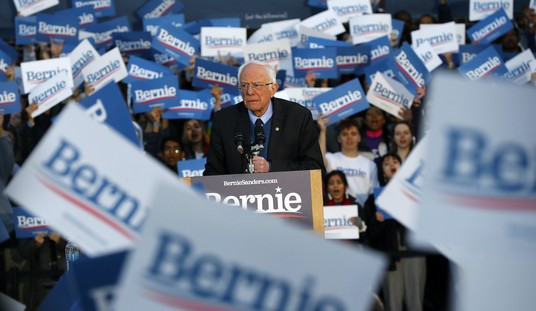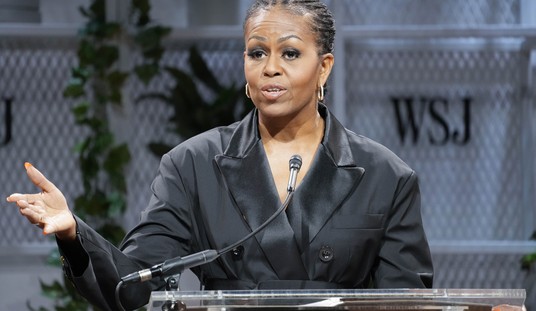Call this the Summer of Division. Both major political parties have struggled to keep up with populist anger, in large part because leadership in both have ignored the voters for so long that they largely don’t recognize them any more. In the Republican Party, the biggest shock has come to movement conservatives, who perhaps never understood how marginalized they have become. That has prompted a long-overdue debate about the identity of the GOP and movement conservatives — and Peggy Noonan welcomes it:
The Beltway intelligentsia of the conservative movement continues to be upset about Mr. Trump’s coming nomination and claim they’d support him but they have to be able to sleep at night. They slept well enough through two unwon wars, the great recession, and the refusal of Republican and Democratic administrations to stop illegal immigration. In a typically evenhanded piece in National Review, Ramesh Ponnuru writes of conservative infighting. Most back Mr. Trump, but others, “especially among conservative writers, activists, and think-tankers,” vow they’ll never vote for him. “This debate splits people who have heretofore been friends with similar views on almost all issues, and who on each side have reasonable arguments to hand. It is therefore being conducted in a spirit of mutual rage, bitterness, and contempt.”
That’s witty and true—I’ve seen it—but the division is also promising. Too much has long been “agreed on.” At some point conservative intellectuals are going to take their energy and start thinking about how we got here. How did a party that stood for regular people become a party that stood for platitudes regular people no longer found even vaguely pertinent? During the Bush administration, did the party intelligentsia muscle critics and silence needed dissent, making the party narrower, more rigid and embittered? What is the new conservatism for this era? How did the party of Main Street become the party of Donors’ Policy Preferences?
There may be some legitimate question about whether the GOP has ever been the party of Main Street, or at least over the last generation. That’s what this split is all about — it’s about the impact of favored policies on the middle class, and the lack of care that Republicans and Democrats have shown toward it. Republican attention has gone far more toward the investor class, while Democrats have tried to build up victimhood classes. Both of those impulses cost the middle class over the last few decades, and the result has been financial disaster, skyrocketing national and personal debt, and a failing infrastructure.
Any political movement has to have the “capaciousness and broadness,” in Noonan’s excellent prose, to offer concrete and effective policies to those issues — and to make those relevant in the lives of voters in their communities. In Going Red, the big lesson was that voters feel entirely disconnected from the “movements” that occupy so much ideological and philosophical debate. They want solutions. Kevin Healy, a firefighter in New Hampshire, made this point clear:
Kevin Healey expresses similar fears for the future of his four children, two of whom are in college and one of whom will go in the next couple of years. “Being an Irish-born family, my parents always said to me, pay your bills, work hard, and save your money, and things are going to work for you. Well that’s not really the case anymore,” he says. “I saved my money and I worked very hard and I paid my bills, and at the end of the day, I still struggle like anyone else because I get 2 percent on my money at the bank, but I pay 8 percent to Fanny Mae for my kids’ student loans. So I turn around and I say, wow how can this possibly be? Why is it I’m only getting 2 percent but the government is charging me 8? Why can’t they make it more financially feasible for these kids and for us as parents?”
Neil Levesque, executive director of the New Hampshire Institute of Politics at Saint Anselm College, says this was an issue that Republicans largely ignored in the 2014 midterms, too, to the benefit of Democrats. “We had large groups of college students here who were interested in the student loan issue. And when they identified a candidate who they thought was going to help them on that,” Levesque recalls, “they were going out and working in their office or in the streets.”
Healey is working with his children to pay off their student loans, but he knows that many young people will have to shoulder that burden themselves. “So you have these kids who work hard, go to school, get into college, get a degree, come out with $100,000 in debt, can’t find a job, only to be hit with 8 percent interest and then go into this vicious cycle.” For the upcoming election, Healy is looking at both parties for a solution. “I don’t care if you’re Republican, Democrat, or independent,” he says. “If you start singing my song, I’m going to listen.”
Reprinted (or Adapted) from GOING RED: THE TWO MILLION VOTERS WHO WILL ELECT THE NEXT PRESIDENT—AND HOW CONSERVATIVES CAN WIN THEM Copyright © 2016 by Ed Morrissey, published by Crown Forum, an imprint of Penguin Random House LLC.
There is nothing that prevents movement conservatism from providing those solutions, but that first requires getting to know these communities and their issues in order to understand how to apply conservative principles to solve them. That’s where movement conservatives should focus their efforts, and not on futile gestures that only serve to underscore how much distance they have from voters, as I wrote in my column for The Fiscal Times this week:
Gone is the pretense of finding proven political leadership or the resources needed for a serious independent bid. In its place is the urge to find anyone willing to run, even if it’s impossible to have any impact at all. It reduces conservatism to a stunt, a gimmick, and one that could do more damage than all of the good Kristol and French authentically hope to accomplish. …
If movement conservatives want to restore their influence, both within and outside of the Republican Party, they need to engage voters in their communities and on the ground. Those activists need to make conservative policies and principles relevant in the lives of voters, not through sound bites about values but through actual solutions to issues in their communities based on those values. That will make conservatism relevant, and its success will give voters a guidepost in national elections.
Some groups on the right, most notably the free-market group Americans for Prosperity, have already begun that kind of granular engagement, but most have not taken that approach. The results speak for themselves in the 2016 Republican primary. Voters didn’t have much emotional connection to movement conservatism, but had plenty of emotional connection to populism, borne of frustration from being ignored over the last several years. That is their reality, and their response to it is entirely rational, even if many dislike that choice, and some choose denial even at this late stage over the fact that the choices are set.
Denying reality doesn’t make conservatism relevant. It relegates it to fantasy. At the very moment when conservatives need to comprehend how marginalized they have become, even among the voters best positioned for sympathy with their positions, they are instead constructing ever more elaborate ways to engage in that denial.








Join the conversation as a VIP Member